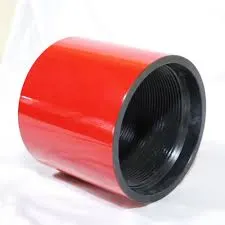- Afrikaans
- Albanian
- Amharic
- Arabic
- Armenian
- Azerbaijani
- Basque
- Belarusian
- Bengali
- Bosnian
- Bulgarian
- Catalan
- Cebuano
- Corsican
- Croatian
- Czech
- Danish
- Dutch
- English
- Esperanto
- Estonian
- Finnish
- French
- Frisian
- Galician
- Georgian
- German
- Greek
- Gujarati
- Haitian Creole
- hausa
- hawaiian
- Hebrew
- Hindi
- Miao
- Hungarian
- Icelandic
- igbo
- Indonesian
- irish
- Italian
- Japanese
- Javanese
- Kannada
- kazakh
- Khmer
- Rwandese
- Korean
- Kurdish
- Kyrgyz
- Lao
- Latin
- Latvian
- Lithuanian
- Luxembourgish
- Macedonian
- Malgashi
- Malay
- Malayalam
- Maltese
- Maori
- Marathi
- Mongolian
- Myanmar
- Nepali
- Norwegian
- Norwegian
- Occitan
- Pashto
- Persian
- Polish
- Portuguese
- Punjabi
- Romanian
- Russian
- Samoan
- Scottish Gaelic
- Serbian
- Sesotho
- Shona
- Sindhi
- Sinhala
- Slovak
- Slovenian
- Somali
- Spanish
- Sundanese
- Swahili
- Swedish
- Tagalog
- Tajik
- Tamil
- Tatar
- Telugu
- Thai
- Turkish
- Turkmen
- Ukrainian
- Urdu
- Uighur
- Uzbek
- Vietnamese
- Welsh
- Bantu
- Yiddish
- Yoruba
- Zulu
Innovative Designs and Applications of Bull Plug Wellhead Technology for Oil and Gas Industry
The Role and Importance of Bull Plug Wellheads in the Oil and Gas Industry
In the oil and gas industry, wellheads serve as critical components in the production process, providing pressure control, flow regulation, and safety measures for well operations. Among the various types of wellheads, the bull plug wellhead stands out due to its unique design and functionality, particularly in managing downhole pressure and ensuring the integrity of the wellbore system.
Understanding Bull Plug Wellheads
A bull plug wellhead is a structural component that allows for the sealing and control of fluid or gas flow from a well. Typically used in both onshore and offshore drilling operations, the bull plug is designed to withstand high pressures and is essential in maintaining safe operational parameters.
The bull plug, usually made from high-strength materials such as steel or aluminum alloys, features a tapered design that creates an effective seal when inserted into the wellhead. This design not only ensures that fluids do not leak during the drilling process but also allows for the safe containment of hydrocarbons until they can be safely processed.
Key Functions of Bull Plug Wellheads
One of the primary functions of a bull plug wellhead is to provide an effective seal against wellbore pressure. During drilling and completion phases, the pressure within the well can fluctuate drastically due to geological formations and production activities. The bull plug acts as a barrier, minimizing the risk of blowouts and ensuring that production operations can continue safely.
Another crucial function of the bull plug wellhead is to facilitate maintenance and inspections of the well
. The design allows operators to easily remove and replace the bull plug when necessary, providing direct access to the wellbore for repairs or assessments. This ease of access is vital in maintaining the health of the well and preventing potential failures that could lead to costly shutdowns or environmental hazards.bull plug wellhead

Advantages of Bull Plug Wellheads
The use of bull plug wellheads offers several advantages over other wellhead types. First and foremost is their ability to provide superior sealing capabilities. The tapered design ensures a secure fit, which is crucial for high-pressure applications. This leads to improved safety as the risks of leaks and blowouts are significantly reduced.
Additionally, bull plug wellheads are generally easier to install and remove compared to traditional wellhead components. This feature can lead to decreased operational downtime and associated costs, making them an attractive option for drilling companies. The ability to swiftly switch out bull plugs also enhances the efficiency of the overall operation, allowing for quicker transitions between different phases of production.
Challenges and Considerations
While bull plug wellheads provide numerous benefits, there are challenges that operators must be aware of. The materials used must withstand not only the pressures typical of oil and gas extraction but also the corrosive nature of some fluids being produced. Hence, regular inspections and maintenance are essential to ensure that the integrity of the bull plug is maintained over time.
Furthermore, the choice of a bull plug wellhead must be carefully considered based on the specific geological and operational conditions of the drilling site. Operators must ensure that the wellhead design is compatible with the expected pressure and temperature conditions to avoid premature failures.
Conclusion
In conclusion, bull plug wellheads play a vital role in the efficient and safe operation of oil and gas wells. Their unique design offers significant advantages in terms of sealing capabilities, ease of maintenance, and operational efficiency. As the industry continues to evolve and face new challenges, the importance of reliable wellhead components like the bull plug cannot be understated. By ensuring that these components are properly selected, installed, and maintained, operators can safeguard their operations, protect the environment, and ultimately contribute to the sustainable development of the oil and gas sector.
-
Tubing Pup Joints: Essential Components for Oil and Gas OperationsNewsJul.10,2025
-
Pup Joints: Essential Components for Reliable Drilling OperationsNewsJul.10,2025
-
Pipe Couplings: Connecting Your World EfficientlyNewsJul.10,2025
-
Mastering Oilfield Operations with Quality Tubing and CasingNewsJul.10,2025
-
High-Quality Casing Couplings for Every NeedNewsJul.10,2025
-
Boost Your Drilling Efficiency with Premium Crossover Tools & Seating NipplesNewsJul.10,2025







